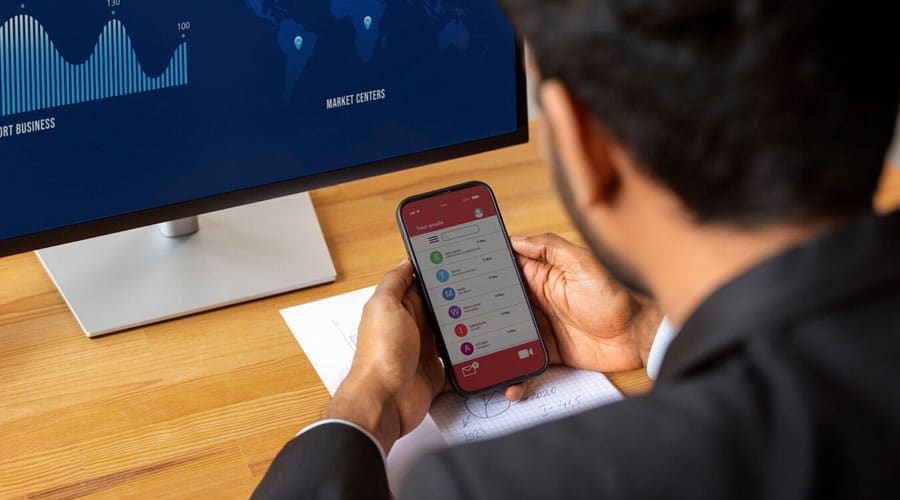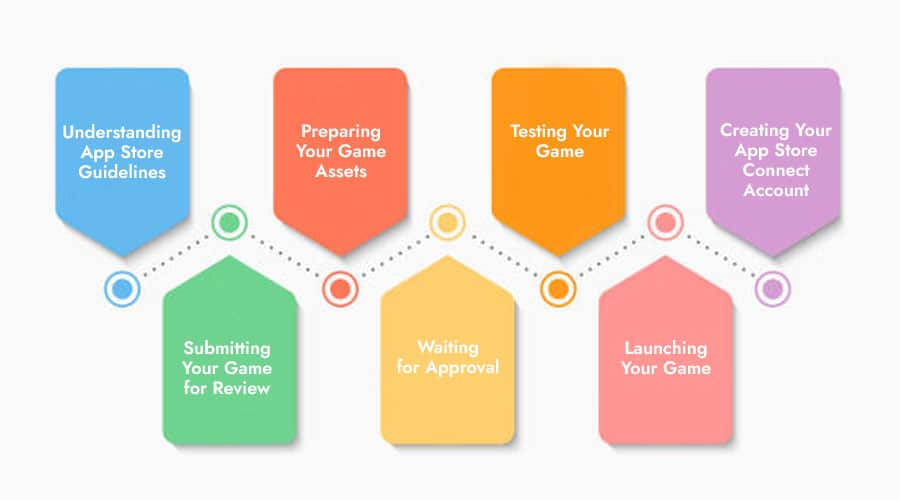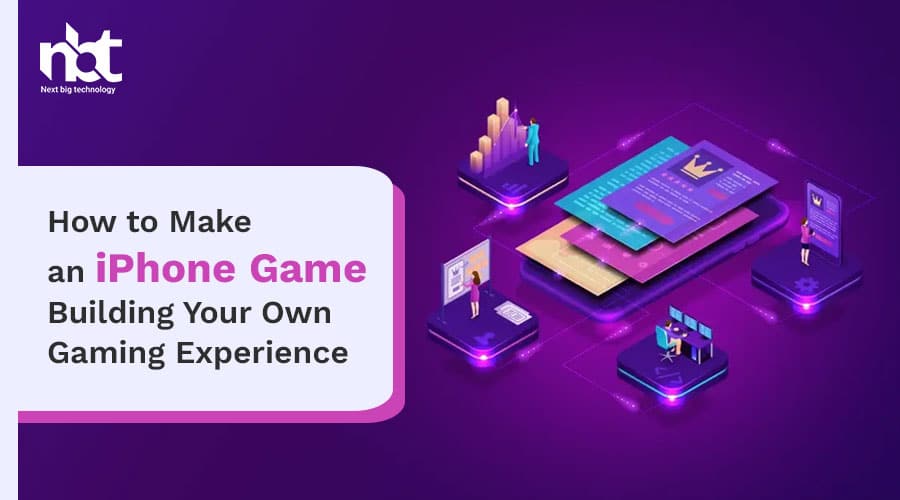Table of Contents
Understanding IOS Game Design Principles
In the dynamic world of mobile gaming, creating a captivating IOS game isn’t just about flashy graphics or intricate storylines; it’s about understanding the core principles that drive engagement and enjoyment. From intuitive user interfaces to addictive gameplay mechanics, mastering IOS game design requires a deep comprehension of what makes a game truly compelling. In this article, we’ll delve into the fundamental principles of IOS game design that every aspiring game developer should know.
- Simplicity is Key: One of the cardinal rules of IOS game design is to keep things simple. From the moment a player launches your game, they should be able to understand the objectives and mechanics without the need for lengthy tutorials. Intuitive controls and minimalist interfaces not only enhance the user experience but also cater to the short attention spans of mobile gamers.
- Engaging Gameplay Mechanics: At the heart of every successful IOS game lies addictive gameplay mechanics. Whether it’s the satisfying swipe gestures of “Angry Birds” or the strategic decision-making in “Clash of Clans,” compelling gameplay hooks players and keeps them coming back for more. Experiment with different mechanics and iterate based on player feedback to find the perfect balance between challenge and enjoyment.
- Immersive Storytelling: While IOS games may not have the narrative depth of console titles, storytelling still plays a crucial role in captivating players. Whether it’s through intriguing character backstories or immersive world-building, weaving a compelling narrative enhances the overall gaming experience and fosters emotional connections with the players.
- Visual Appeal: In the competitive landscape of the App Store, eye-catching visuals can make or break the success of your game. Invest in high-quality graphics, vibrant animations, and visually appealing art styles to stand out from the crowd and entice players to download and engage with your game.
- Social Integration: Leveraging social features within your IOS game can significantly enhance player retention and virality. Whether it’s competing with friends on leaderboards, sharing achievements on social media, or collaborating in multiplayer modes, integrating social elements fosters a sense of community and keeps players engaged for the long haul.
- Regular Updates and Support: The journey of IOS game design doesn’t end with the initial launch; it’s an ongoing process of iteration and improvement. Listen to player feedback, analyze metrics, and regularly update your game with new content, features, and bug fixes to keep it fresh and relevant in the ever-evolving mobile gaming landscape.
- Monetization Strategies: While creating a captivating gaming experience is paramount, it’s also essential to consider monetization strategies to sustain your game’s development and growth. Whether through in-app purchases, ads, or premium pricing models, choose a monetization strategy that aligns with your game’s design and target audience while providing value to players.
Choosing the Right IOS Game Development Tools

In the dynamic world of mobile gaming, iOS stands tall as a prominent platform offering an array of opportunities for game developers. With its vast user base and powerful hardware, creating engaging and immersive games for iOS can be a lucrative venture. However, to embark on this journey successfully, one must carefully choose the right tools for iOS game development. In this guide, we’ll explore some essential considerations to help you make informed decisions when selecting iOS game development tools.
- Game Engine: One of the primary decisions you’ll make is choosing the game engine that best suits your project requirements. Popular choices like Unity and Unreal Engine offer robust features, cross-platform support, and extensive community support. Additionally, engines like SpriteKit and Cocos2D are tailored specifically for iOS development, providing seamless integration with Apple’s ecosystem.
- Programming Language: iOS game development predominantly relies on languages like Swift and Objective-C. While Swift is the newer and preferred language for iOS development, Objective-C still holds relevance, especially for legacy projects. Evaluate your team’s expertise and project requirements to determine the most suitable programming language.
- Graphics and Animation Tools: Stunning visuals and smooth animations are crucial for captivating gameplay experiences. Tools like Adobe Photoshop and Illustrator are indispensable for creating high-quality graphics, while software such as Spine and DragonBones facilitate intricate animation workflows. Consider the level of detail and complexity required for your game when selecting these tools.
- Integrated Development Environment (IDE): A robust IDE enhances productivity and streamlines the development process. Xcode, Apple’s official IDE, offers a comprehensive suite of tools for iOS development, including code editing, debugging, and performance analysis. Alternatively, third-party IDEs like Visual Studio Code with appropriate extensions can provide a familiar environment for developers.
- Version Control and Collaboration: Efficient version control and collaboration tools are essential, especially for team-based projects. Git, coupled with platforms like GitHub or Bitbucket, enables seamless collaboration, version tracking, and code management. Prioritize tools that facilitate efficient communication and collaboration among team members.
- Performance Optimization Tools: Optimizing performance is crucial for delivering smooth gameplay experiences on iOS devices. Instruments, Apple’s performance analysis tool, helps identify bottlenecks and optimize code for better efficiency. Additionally, tools like Unity Profiler and Unreal Engine’s built-in profiling tools aid in diagnosing and resolving performance issues.
- Monetization and Analytics Integration: Integrating monetization strategies and analytics into your game is vital for maximizing revenue and understanding user behavior. Platforms like Apple’s App Store offer various monetization options, including in-app purchases and subscriptions. Incorporating analytics tools like Firebase Analytics or Flurry enables you to gather valuable insights into user engagement and retention.
- Cross-Platform Compatibility: While focusing on iOS development, consider future scalability and potential expansion to other platforms. Choosing tools with cross-platform compatibility, such as Unity or Unreal Engine, allows you to port your game seamlessly to Android or other platforms, maximizing your reach and potential audience.
Designing Engaging Characters and Environments
Designing engaging characters and environments is a crucial aspect of various creative endeavors, from video games and animation to literature and film. These elements serve as the backbone of storytelling, drawing audiences into immersive worlds and captivating narratives. In this article, we’ll delve into the art of crafting characters and environments that resonate with audiences, exploring techniques to evoke emotion, foster connection, and elevate the overall experience.
Understanding Character Design: Characters are the heart and soul of any story, serving as vessels through which audiences experience the narrative. To create compelling characters, it’s essential to imbue them with depth, personality, and relatability. Begin by developing a backstory that informs their motivations, fears, and desires. Consider their strengths and weaknesses, as well as their unique quirks and flaws that make them memorable and authentic.
Visual design plays a crucial role in character creation, encompassing aspects such as appearance, attire, and body language. Pay attention to details that communicate personality traits and convey emotions effectively. Whether it’s a steely-eyed hero, a mischievous sidekick, or a fearsome villain, each character should be visually distinct and instantly recognizable.
Moreover, character development extends beyond aesthetics to encompass their role within the narrative and their interactions with other characters and the environment. Explore their relationships, conflicts, and growth arcs, ensuring that they evolve organically throughout the story.
Crafting Captivating Environments: Environments serve as the backdrop against which the story unfolds, setting the tone, mood, and atmosphere. Whether it’s a bustling cityscape, a mystical forest, or a post-apocalyptic wasteland, the environment should be as dynamic and engaging as the characters themselves.
Start by establishing the overarching theme and aesthetic of the environment, considering factors such as time period, geography, and cultural influences. Pay attention to details that enhance immersion, from architectural design and landscape features to ambient sounds and weather effects.
Moreover, environments should be more than mere backdrops; they should actively contribute to the narrative and character development. Utilize environmental storytelling techniques to convey information, evoke emotion, and drive the plot forward. Whether it’s a dilapidated mansion hinting at dark secrets or a vibrant marketplace bustling with life, each location should feel alive and integral to the story.
Creating Synergy Between Characters and Environments: The most captivating narratives arise when characters and environments complement each other seamlessly, creating a symbiotic relationship that enhances immersion and emotional resonance. Consider how characters interact with their surroundings and how the environment shapes their behavior and decisions.
For instance, a character’s backstory might be reflected in the dilapidated surroundings of their hometown, evoking feelings of nostalgia or melancholy. Likewise, environmental obstacles or hazards can serve as catalysts for character development, pushing them to overcome challenges and grow.
Furthermore, dynamic interactions between characters and environments can drive the plot forward and add layers of complexity to the story. Whether it’s a tense standoff in a crumbling ruin or a tender moment beneath a starlit sky, these moments of synergy elevate the narrative and leave a lasting impact on audiences.
Learning the Basics of Coding for iOS Development

In the fast-paced world of technology, iOS development stands out as a vibrant field offering immense opportunities for those willing to delve into the world of app creation. Whether you’re an aspiring developer or someone curious about the intricacies of iOS applications, understanding the basics of coding is essential. So, let’s embark on a journey to unravel the fundamentals of coding for iOS development.
- Choose Your Language: The cornerstone of iOS development lies in mastering programming languages like Swift or Objective-C. Swift, developed by Apple, has gained immense popularity due to its simplicity and powerful features. Start by familiarizing yourself with the syntax, data types, control flow, and other basic concepts of Swift.
- Getting to Know Xcode: Xcode is the Integrated Development Environment (IDE) designed by Apple for macOS, used for developing software for iOS, iPadOS, macOS, watchOS, and tvOS. Learn to navigate through Xcode’s interface, understand its various components, and leverage its tools for coding, debugging, and testing your iOS apps.
- Understanding UI/UX Design: While coding forms the backbone of iOS development, a good understanding of User Interface (UI) and User Experience (UX) design principles is equally important. Explore Interface Builder, a part of Xcode, to design visually appealing interfaces using elements like buttons, labels, text fields, and more.
- Model-View-Controller (MVC) Architecture: MVC is a design pattern widely used in iOS development for organizing code in a structured manner. Understand the roles of models, views, and controllers in an iOS app, and learn how to implement MVC architecture to create scalable and maintainable code.
- Basic Concepts of Object-Oriented Programming (OOP): iOS development heavily relies on Object-Oriented Programming principles. Grasp concepts like classes, objects, inheritance, polymorphism, and encapsulation to write efficient and reusable code for your iOS apps.
- Data Persistence: Learn how to store and retrieve data in iOS apps using techniques like UserDefaults for small amounts of data, Core Data for managing complex data models, or SQLite for relational database management.
- Networking and API Integration: Most modern iOS apps interact with web services to fetch data or perform operations. Gain knowledge about making network requests, parsing JSON or XML responses, and integrating APIs into your iOS apps using frameworks like URLSession.
- Testing and Debugging: As you progress in your iOS development journey, testing and debugging become indispensable skills. Explore unit testing, UI testing, and debugging techniques to ensure the reliability and stability of your iOS apps across different devices and iOS versions.
- Continuous Learning and Practice: iOS development is a dynamic field that constantly evolves with new updates and technologies. Stay updated with the latest trends, participate in online communities, contribute to open-source projects, and most importantly, keep coding regularly to hone your skills and deepen your understanding.
Testing and Debugging Your IOS Game
Developing an iOS game is an exciting journey filled with creativity and innovation. However, amidst the exhilaration of bringing your game to life, it’s essential not to overlook the critical steps of testing and debugging. Effective testing and debugging processes ensure that your game runs smoothly, providing an enjoyable experience for your players. In this comprehensive guide, we’ll delve into the intricacies of testing and debugging your iOS game, equipping you with the tools and knowledge to identify and resolve issues efficiently.
Understanding the Importance of Testing: Before launching into the testing phase, it’s crucial to comprehend why testing is integral to the success of your iOS game. Testing helps identify bugs, glitches, and performance issues that could hinder the player experience. By uncovering these issues early on, you can address them proactively, enhancing the overall quality of your game. Additionally, thorough testing instills confidence in your product, reassuring both developers and players that the game functions as intended.
Types of Testing: Testing an iOS game involves various methodologies to ensure comprehensive coverage. Here are some essential types of testing to incorporate into your process:
- Functionality Testing: This type of testing examines whether all features and functionalities of the game operate correctly. Test every aspect of gameplay, including controls, menus, levels, and game mechanics, to ensure seamless interaction.
- Performance Testing: Performance testing evaluates the game’s responsiveness, speed, and resource utilization. Pay attention to factors such as loading times, frame rates, and memory usage to optimize performance across different iOS devices.
- Compatibility Testing: With the diversity of iOS devices available, it’s crucial to test your game across multiple devices and operating system versions. Ensure compatibility with various screen sizes, resolutions, and hardware configurations to reach a broader audience.
- Usability Testing: Usability testing focuses on the overall user experience, assessing aspects such as intuitiveness, navigation, and accessibility. Solicit feedback from testers to identify any pain points and make necessary improvements.
Debugging Techniques: Debugging is the process of identifying and resolving errors or defects in your game’s code. Here are some effective debugging techniques to streamline the process:
- Use Debugging Tools: Leverage Xcode’s built-in debugging tools, such as the debugger console and Instruments, to analyze runtime issues, memory leaks, and performance bottlenecks. These tools provide valuable insights into your game’s behavior during runtime.
- Implement Logging: Incorporate logging statements strategically throughout your code to track the flow of execution and capture relevant data. Logging helps pinpoint the source of bugs and provides valuable information for troubleshooting.
- Breakpoint Debugging: Set breakpoints in your code to pause execution at specific points and examine variables, expressions, and call stacks. This allows for interactive debugging, enabling you to step through code and identify issues systematically.
- Test on Real Devices: While simulators offer convenience, testing your game on real iOS devices is essential to uncover device-specific issues and ensure accurate performance metrics. Use a combination of physical devices and simulators to validate your game’s functionality across different environments.
Optimizing Performance for iOS Devices

In the dynamic world of technology, where every millisecond counts, optimizing performance for iOS devices has become paramount. Whether you’re developing an app, game, or website, ensuring optimal performance on iOS devices can significantly enhance user experience and retention rates. With a plethora of iOS devices in the market, ranging from iPhones to iPads, mastering performance optimization techniques is essential for developers to deliver seamless and responsive experiences. Let’s delve into some strategies to optimize performance for iOS devices.
- Efficient Code Optimization: Writing efficient and optimized code is the foundation of performance optimization. Utilize Apple’s recommended programming practices and design patterns to streamline your code. Avoid unnecessary loops, reduce memory footprint, and optimize algorithms to minimize processing overhead.
- Image and Asset Compression: Images and other assets can heavily impact performance, especially on devices with limited resources. Utilize image compression techniques to reduce file sizes without compromising quality. Employ modern image formats like WebP or HEIC for better compression ratios. Additionally, consider lazy loading images to defer loading until they are needed, reducing initial loading times.
- Minimize Network Requests: Excessive network requests can introduce latency and degrade performance. Minimize HTTP requests by combining resources, leveraging caching mechanisms, and prefetching data intelligently. Implement techniques such as HTTP/2 multiplexing and content delivery networks (CDNs) to optimize network throughput and reduce latency.
- Memory Management: Effective memory management is crucial for maintaining optimal performance, especially on devices with limited RAM. Utilize Automatic Reference Counting (ARC) to manage memory efficiently and avoid memory leaks. Implement object pooling and resource reuse to minimize memory churn and alleviate pressure on the memory subsystem.
- UI/UX Optimization: A responsive and fluid user interface is paramount for a positive user experience. Optimize UI performance by minimizing layout recalculations, reducing view hierarchy complexity, and leveraging Core Animation for smooth transitions and animations. Implement asynchronous rendering and offloading tasks to background threads to ensure UI responsiveness and prevent jank.
- Battery Efficiency: Battery life is a critical aspect of user satisfaction on mobile devices. Optimize energy consumption by minimizing CPU and GPU usage, optimizing background tasks, and leveraging low-power modes when appropriate. Implement efficient scheduling algorithms and throttle resource-intensive tasks to prolong battery life without sacrificing performance.
- Performance Monitoring and Profiling: Continuous performance monitoring and profiling are essential for identifying performance bottlenecks and areas for improvement. Utilize Apple’s Instruments toolset to analyze CPU, memory, and energy usage in real-time. Identify hotspots, memory leaks, and inefficient code paths, and iteratively optimize performance based on empirical data.
- Device-specific Optimization: Different iOS devices have varying hardware capabilities and performance characteristics. Tailor your optimization strategies to target specific device models and hardware configurations. Utilize device-specific APIs and features to maximize performance while maintaining compatibility across a wide range of iOS devices.
Integrating Social and Multiplayer Features for Ios
In the ever-evolving landscape of mobile app development, providing users with engaging and interactive experiences is paramount. With the proliferation of social media and the increasing demand for multiplayer functionality, integrating these features into iOS apps has become a key strategy for developers to stay competitive and capture user interest. In this article, we’ll explore the significance of incorporating social and multiplayer features into iOS apps and provide insights into how developers can effectively implement these functionalities.
Understanding the Importance
The integration of social and multiplayer features can significantly enhance the user experience of iOS apps in various ways:
- Increased User Engagement: Social features such as sharing achievements, inviting friends, and interacting with other users create a sense of community within the app, encouraging users to spend more time and engage actively.
- Viral Marketing: By allowing users to share their in-app activities on social media platforms, developers can leverage word-of-mouth marketing, reaching a wider audience and driving app downloads.
- Retention and Monetization: Multiplayer functionalities such as real-time gaming or collaborative tasks can foster long-term engagement and encourage users to return to the app regularly. Moreover, integrating in-app purchases or advertisements within multiplayer experiences can generate additional revenue streams.
Implementing Social Features
When integrating social features into iOS apps, developers should consider the following strategies:
- Social Login Integration: Simplify the onboarding process by allowing users to sign in using their social media accounts such as Facebook or Google. This not only streamlines the registration process but also facilitates social connections within the app.
- In-App Social Sharing: Enable users to share their achievements, high scores, or content from the app directly to their social media profiles. Implementing social sharing APIs provided by platforms like Facebook, Twitter, or Instagram can make this process seamless.
- Social Feeds and Notifications: Incorporate social feeds or activity notifications within the app to keep users updated on their friends’ activities, encouraging interaction and fostering a sense of community.
Integrating Multiplayer Functionality
To implement multiplayer features effectively in iOS apps, developers can follow these best practices:
- Choose the Right Networking Technology: Select an appropriate networking technology such as Apple’s GameKit, WebSocket, or third-party SDKs like Photon or Firebase to facilitate real-time communication between players.
- Design Scalable Backend Infrastructure: Develop a robust backend infrastructure capable of handling multiplayer game sessions, matchmaking, and player data synchronization to ensure a smooth gaming experience for users.
- Implement Matchmaking Algorithms: Utilize matchmaking algorithms based on factors like skill level, geographic location, or preferences to pair players effectively, ensuring balanced and enjoyable gameplay experiences.
Building a Community Around Your Game

In the ever-evolving landscape of gaming, creating an immersive and engaging experience is only half the battle. Building a vibrant community around your game is equally essential for long-term success. A dedicated community not only enhances player retention but also serves as a valuable asset for feedback, marketing, and fostering a sense of belonging among players. Here’s a comprehensive guide on how to effectively build and nurture a community around your game.
Understanding Your Audience: Before diving into community-building initiatives, it’s crucial to understand your target audience. What demographics do they belong to? What are their preferences, interests, and gaming habits? Conducting thorough market research and analyzing player data can provide invaluable insights into your audience’s needs and preferences.
Creating a Centralized Hub: Establishing a centralized hub where players can congregate, interact, and access relevant information is key to community-building. This could be a dedicated website, forum, or social media channels tailored specifically for your game. Ensure that the platform is user-friendly, easily accessible, and fosters a sense of community spirit.
Encouraging Engagement: Encourage active participation and engagement within the community by organizing events, competitions, and challenges. Incorporate elements such as leaderboards, achievements, and rewards to incentivize participation. Additionally, actively engage with your community through regular updates, developer insights, and responding to feedback and queries promptly.
Fostering a Positive Environment: Maintain a positive and inclusive environment within your community by enforcing clear guidelines and moderation policies. Encourage respectful behavior and discourage toxicity and harassment. Cultivate a sense of camaraderie and mutual respect among community members, fostering a welcoming atmosphere for both new and existing players.
Leveraging User-Generated Content: Empower your community by allowing them to contribute their own content, such as fan art, videos, and guides. Showcase user-generated content prominently, highlighting the creativity and talent within your community. This not only strengthens player engagement but also fosters a sense of ownership and pride among community members.
Open Channels of Communication: Establish open channels of communication between developers and the community, such as developer blogs, live streams, and Q&A sessions. Solicit feedback, suggestions, and ideas directly from players, demonstrating that their input is valued and considered. Transparency and open dialogue build trust and foster a sense of partnership between developers and the community.
Cross-Promotion and Partnerships: Explore opportunities for cross-promotion and partnerships with other gaming communities, influencers, and content creators. Collaborative efforts can help expand your reach, attract new players, and strengthen your community’s ties with the broader gaming ecosystem.
Continual Iteration and Improvement: Community-building is an ongoing process that requires continual iteration and improvement. Regularly evaluate the effectiveness of your strategies, gather feedback from community members, and adapt accordingly. Stay attuned to evolving trends, technologies, and player preferences, ensuring that your community remains dynamic and relevant.
Submitting Your IOS Game to the App Store: Guidelines and Process

Are you ready to take the gaming world by storm with your latest iOS creation? Congratulations! Now, it’s time to navigate the process of submitting your game to the App Store. While it may seem daunting at first, with the right guidelines and understanding of the process, you’ll soon have your game available for millions of users to enjoy. Let’s dive into the steps you need to follow to successfully submit your iOS game.
Understanding App Store Guidelines: Before you embark on the submission process, it’s crucial to familiarize yourself with the App Store guidelines. Apple has strict criteria that your game must meet in order to be accepted. These guidelines cover various aspects including content, design, functionality, and more. Ensuring that your game complies with these guidelines will increase your chances of approval and prevent any unnecessary delays in the submission process.
Preparing Your Game Assets: Next, you’ll need to gather all the necessary assets required for your game’s listing on the App Store. This includes high-quality screenshots, an engaging app icon, a captivating description, and any promotional materials you may want to include. Remember, your game’s visuals and description are the first impression users will have, so make sure they accurately represent the essence of your game and entice potential players to download it.
Testing Your Game: Before submitting your game, thorough testing is essential to identify and fix any bugs or issues that may arise. Utilize Apple’s testing tools such as TestFlight to conduct beta testing with a select group of users. Feedback from beta testers can provide valuable insights and help you polish your game before its official release on the App Store.
Creating Your App Store Connect Account: Once your game is polished and ready to go, it’s time to create an App Store Connect account. This platform serves as the portal for developers to manage their apps on the App Store. Through App Store Connect, you’ll be able to submit your game for review, monitor its performance, and manage updates and releases.
Submitting Your Game for Review: With your App Store Connect account set up, you can now proceed to submit your game for review. Provide all the necessary information about your game, including its title, description, keywords, and category. Ensure that you accurately complete all sections of the submission form to expedite the review process.
Waiting for Approval: Once you’ve submitted your game, the waiting game begins. Apple’s review process typically takes anywhere from a few days to a couple of weeks. During this time, Apple will evaluate your game to ensure it meets their guidelines and quality standards. Be patient and be prepared to address any feedback or requests for revisions from the review team.
Launching Your Game: Congratulations! Upon receiving approval from Apple, your game will be live on the App Store for users to discover and download. Take advantage of this opportunity to promote your game through social media, press releases, and other marketing channels to maximize its visibility and reach.
Top iOS Mobile Games Development Companies
In the ever-evolving landscape of mobile gaming, iOS remains a powerhouse platform, offering a vast array of captivating experiences to millions of users worldwide. Behind these engaging games lie the creative minds and technical expertise of mobile game development companies. Today, we delve into the realm of iOS gaming to uncover the top players in the industry, renowned for their innovation, quality, and entertainment value.
-
Next Big Technology:

Focus Area
- Mobile App Development
- App Designing (UI/UX)
- Software Development
- Web Development
- AR & VR Development
- Big Data & BI
- Cloud Computing Services
- DevOps
- E-commerce Development
Industries Focus
- Art, Entertainment & Music
- Business Services
- Consumer Products
- Designing
- Education
- Financial & Payments
- Gaming
- Government
- Healthcare & Medical
- Hospitality
- Information Technology
- Legal & Compliance
- Manufacturing
- Media
- King: The mastermind behind the immensely popular Candy Crush Saga franchise, King continues to dominate the iOS gaming market with its blend of puzzle-solving and match-three mechanics. With a diverse portfolio of casual games that appeal to a broad audience, King remains a stalwart presence on the App Store charts.
- Epic Games: Recognized for its groundbreaking Unreal Engine technology and the revolutionary Fortnite phenomenon, Epic Games has established itself as a powerhouse in the world of iOS gaming. With a commitment to pushing the boundaries of graphical fidelity and immersive gameplay experiences, Epic Games continues to raise the bar for mobile gaming excellence.
- Rovio Entertainment: Widely known as the creators of the iconic Angry Birds franchise, Rovio Entertainment has left an indelible mark on the iOS gaming landscape. Beyond catapulting feathered protagonists at precarious structures, Rovio has diversified its portfolio with innovative spin-offs and new intellectual properties, ensuring continued success in the competitive mobile gaming market.
- Gameloft: With a prolific catalog of mobile titles spanning various genres, Gameloft has emerged as a leading force in iOS game development. From adrenaline-fueled racing games to immersive open-world adventures, Gameloft consistently delivers high-quality experiences that push the boundaries of what’s possible on mobile devices.
- Netmarble: Hailing from South Korea, Netmarble has made significant strides in the iOS gaming industry with its portfolio of visually stunning and engaging titles. With a focus on role-playing games and strategy-based experiences, Netmarble has garnered a dedicated fanbase worldwide, cementing its status as a top-tier mobile game developer.
- Niantic: Leveraging the power of augmented reality technology, Niantic has captivated iOS gamers with groundbreaking titles such as Pokémon GO and Harry Potter: Wizards Unite. By seamlessly blending real-world exploration with virtual gameplay elements, Niantic has redefined the mobile gaming experience and continues to push the boundaries of what’s possible in the realm of AR gaming.
- Hipster Whale: Best known for the endlessly charming and addictive Crossy Road franchise, Hipster Whale has carved out a niche for itself in the iOS gaming market. With a focus on accessible gameplay mechanics and delightful pixel art visuals, Hipster Whale’s titles resonate with players seeking lighthearted entertainment on their mobile devices.
- Playrix: Renowned for its immersive puzzle-solving adventures such as Gardenscapes and Homescapes, Playrix has emerged as a formidable player in the iOS gaming space. With a knack for creating compelling narratives and engaging gameplay loops, Playrix captivates players with its meticulously crafted gaming experiences.
- Ubisoft: A stalwart in the gaming industry, Ubisoft has successfully transitioned its renowned franchises to the iOS platform, offering players the chance to experience their favorite titles on the go. With hits like Assassin’s Creed Identity and Rayman Adventures, Ubisoft continues to deliver high-quality gaming experiences that resonate with iOS users worldwide.
FAQs On iOS Mobile Games
Are you an avid iOS gamer looking to dive deeper into the world of mobile gaming? Or perhaps you’re a newcomer curious about the ins and outs of gaming on your iPhone or iPad? Whether you’re a seasoned player or just starting out, it’s natural to have questions about iOS mobile games. To help you navigate this exciting realm, we’ve compiled a list of frequently asked questions (FAQs) along with detailed answers:
- What are iOS mobile games? iOS mobile games are video games designed specifically to run on Apple’s iOS operating system, which powers devices such as the iPhone, iPad, and iPod Touch. These games are available for download through the Apple App Store and cover a wide range of genres, including action, adventure, puzzle, simulation, strategy, and more.
- Are iOS mobile games free to play? While there are many free-to-play iOS games available, there are also plenty of paid options. Free-to-play games often generate revenue through in-app purchases or advertising, while paid games require an upfront purchase to download and play. Additionally, some games offer a combination of free and paid content, allowing players to choose how they want to experience the game.
- How do I find and download iOS mobile games? To find iOS mobile games, simply open the App Store app on your device and navigate to the “Games” section. From there, you can browse through featured games, search for specific titles, or explore various genres and categories. Once you find a game you’re interested in, tap on it to view more details and download it to your device.
- Can I play iOS mobile games offline? Yes, many iOS mobile games can be played offline, but it depends on the specific game. Some games require an internet connection to play, especially those with multiplayer or online features. However, many single-player games and certain offline modes within multiplayer games can be enjoyed without an internet connection.
- Are iOS mobile games safe for children? The safety of iOS mobile games for children depends on various factors, including the content of the game and parental controls. While the App Store has strict guidelines regarding age-appropriate content, it’s essential for parents to review game ratings, read reviews, and enable parental controls on their devices to ensure their children are playing games that are suitable for their age.
- Do iOS mobile games support controllers? Yes, many iOS mobile games support external controllers, including MFi (Made for iPhone/iPad) controllers and certain Bluetooth controllers. This allows players to enjoy a more traditional gaming experience with physical buttons and joysticks, enhancing gameplay for certain genres such as action and racing games.
- Can I play iOS mobile games with friends? Absolutely! Many iOS mobile games offer multiplayer modes that allow you to play with friends either locally or online. Whether it’s teaming up in cooperative games, competing against each other in competitive matches, or simply comparing high scores, playing with friends can add a whole new dimension to your iOS gaming experience.
- How often are new iOS mobile games released? New iOS mobile games are released regularly, with developers constantly creating and publishing new titles to the App Store. Additionally, existing games often receive updates with new content, features, and improvements, keeping the iOS gaming ecosystem fresh and exciting for players.
- Can I transfer iOS mobile game progress between devices? In many cases, yes. Some iOS mobile games support cloud saves or account-based progress syncing, allowing you to pick up where you left off on a different device as long as you’re logged into the same account. However, not all games offer this feature, so it’s essential to check each game’s specific capabilities.
- Are iOS mobile games worth the investment of time and money? Ultimately, whether iOS mobile games are worth your time and money depends on your personal preferences and gaming habits. With thousands of games to choose from across a wide range of genres and price points, there’s something for everyone on the App Store. Whether you’re looking for a quick distraction during your commute or a deep, immersive gaming experience to sink your teeth into, iOS mobile games offer endless possibilities for entertainment and enjoyment.
Thanks for reading our post “How to Make an iPhone Game: Building Your Own Gaming Experience”. Please connect with us to learn more about iPhone Game.


















